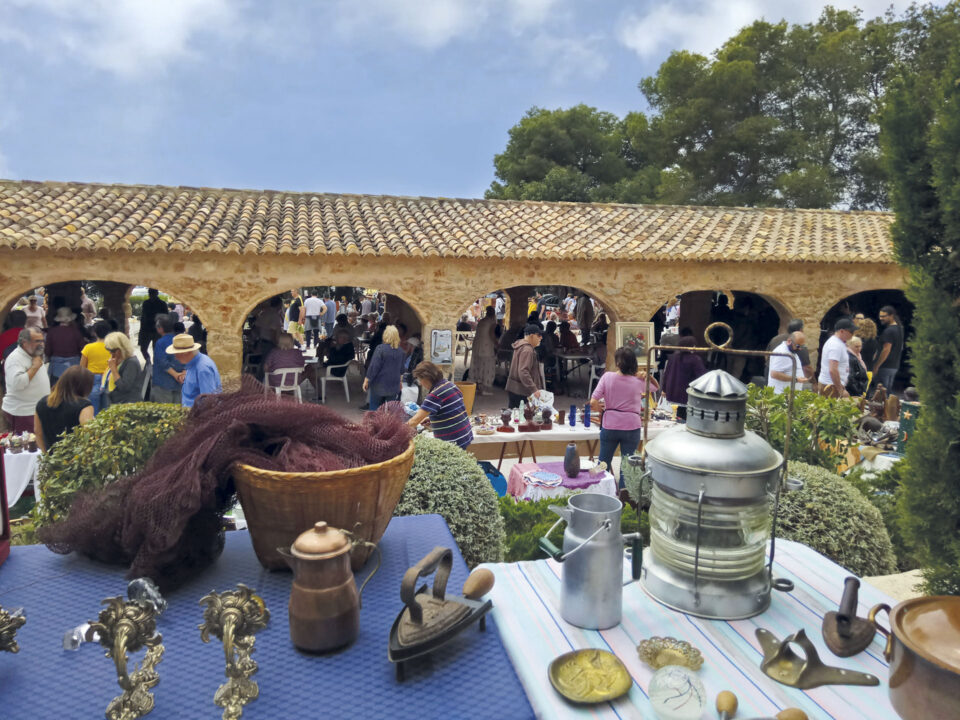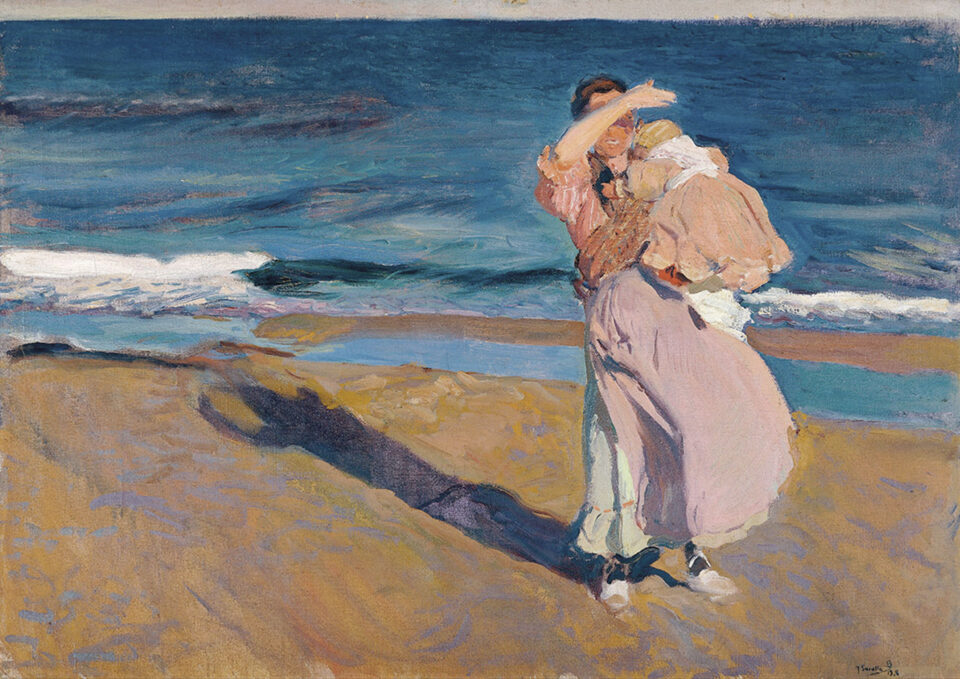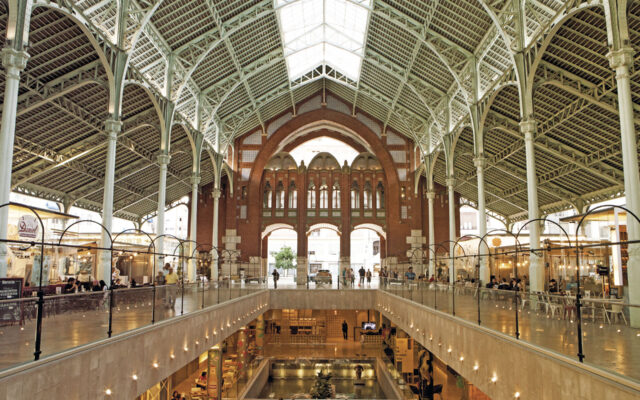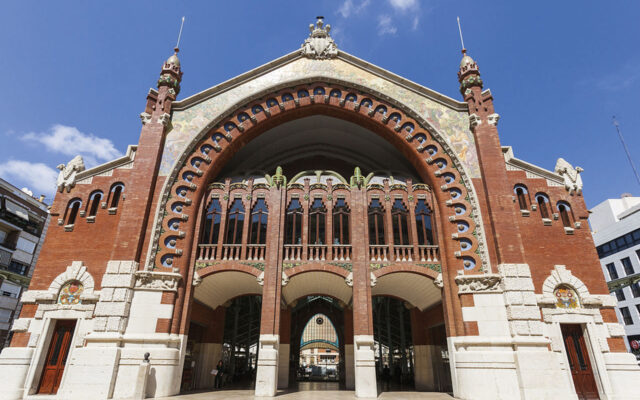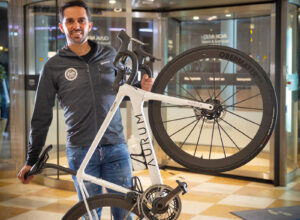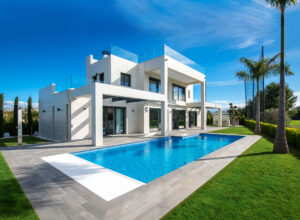The perfect assimilation of modernism by the bourgeoisie in Valencia turns it into one of the Spanish cities with the greatest volume of modernist artworks. However, Valencian modernism is marked by the mixture of different tendencies: sometimes it is baroque and exuberant, other times it follows an ordered geometric configuration and other times it uses classicist elements.
Modernism arrived in Valencia at the beginning of the 20th century, a period of high commercial and urban spirits. It was the confirmation of what had already happened in other parts of the world: a step forward from the rational conception of architectural aesthetic to a more romantic point of view which praised the Valencian traditions. Modernism arrived as a breath of fresh air, not only in Valencia but also in other parts of the region. Although it is part of a mainstream which sprang up throughout Europe, Valencian modernism was mainly influenced by the artistic movement known as the Vienna Secession, the French Art Nouveau style and the modernist trends in Barcelona. Our architects drank from different international sources such as the “Jugedstil” (young style) or the Vienna Secession, an artistic movement raised in Vienna by the end of the 19th century. Modernist architecture needs to be understood from the influence exerted by the engineering design using iron, ceramics and glass. These materials are certainly visible in modernist buildings as decorative elements. Buildings also include symbolic or allegorical items related to the Valencian society: mosaics representing the participants of Fallas, the orchards, fishermen and oranges… The stark Valencia of that time was filled with colour. From that moment on, a renowned style was created in Valencia and in many other parts of the region.
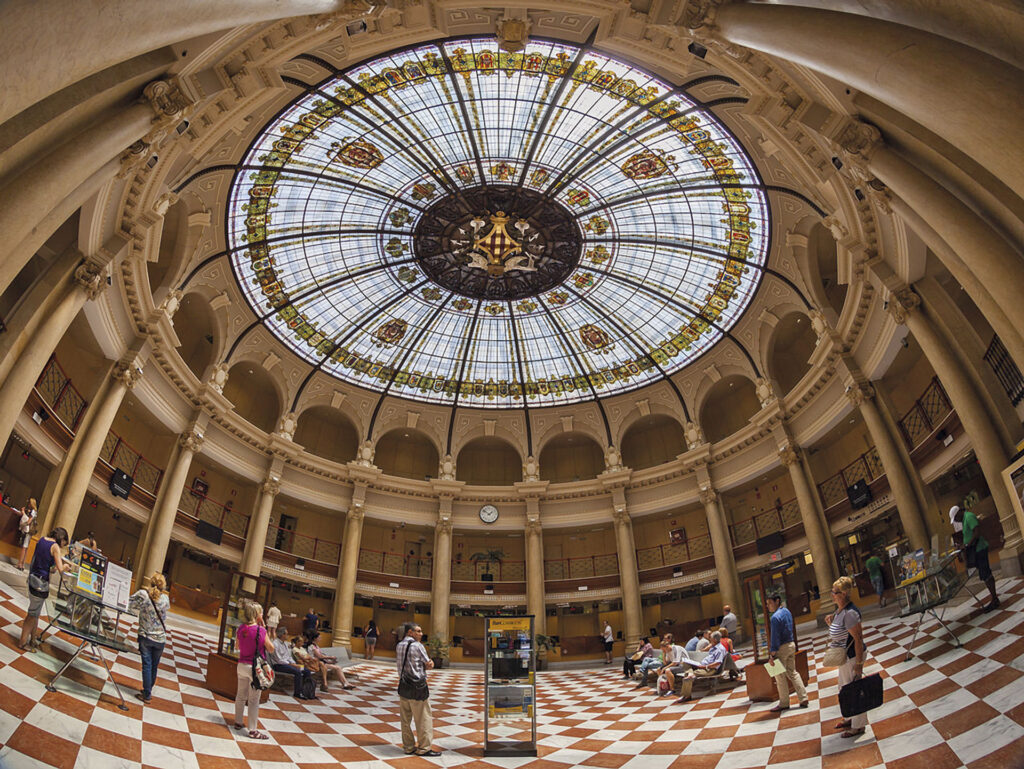
The North Station was inaugurated in 1917 as the main railway access to Valencia, as it is in the city centre. The building is one of the main works of the Valencian modernism, in terms of architecture and aesthetics of a city in the making. It was built by Demetrio Ribes, one of the most relevant modernist architects in Valencia and the Vienna Secession has a clear influence on the monumental metal roof, the most notable feature inside. Facing the square where the city hall of Valencia is, the building façade is horizontally distributed: there are 3 different building sections characterised by its outstanding tower form. The building is packed with full-colour mosaics, ceramics and tiles representing the local customs and manners: oranges, orange blossom and the city coat of arms as the main emblem.
Only 200 metres way, there is another iconic building of the Valencian modernism: the Post Office, inaugurated in 1923 and located in the city hall square. In a more eclectic style, the building stands out for its modernist features. The use of metal in the structure and decoration is clearly reflected in the tower at the top of the building. Its monumental character symbolises the progress that was achieved by postal and telegraphic communications in the first decades of the 20th century. The oval room and the elliptic glass dome stand out in the inside. There are 370 glass panels representing at the coat of arms of the 48 of the provinces that form Spain and, right in the middle, a majestic brass coat of arms of the city of Valencia.
Heading towards the district of the Eixample, in the eastern area of the city, we find the Mercado de Colón (1916), one of the main works of the Valencian modernism. It was built to make provisions for the bourgeoisie in the area. The building is declared National Monument. Any of its façades make it different from any other building in the city: the façade in the street Conde Salvatierra has a large window and canopy protecting the access door; the façade in the street Jorge Juan is the most spectacular in terms of Valencian ceramics: trencadís, mosaic and ceramic tiles form an arch 16 metres wide representing traditional images such as the participants of Fallas and many coats of arms. Valencian customs again. The architect Mora Berenguer showed his taste for detail and clean ornamentation, clearly inspired by Gaudí as it recalls the Nativity Façade of the Sagrada Familia Cathedral in Barcelona. The open nature of the building is one of the novelties of that period, as its openness provides a delightful transparent sensation. It was refurbished in 2003 with an inversion of 33 million Euros to turn it into as a referent gastronomic point in the city.
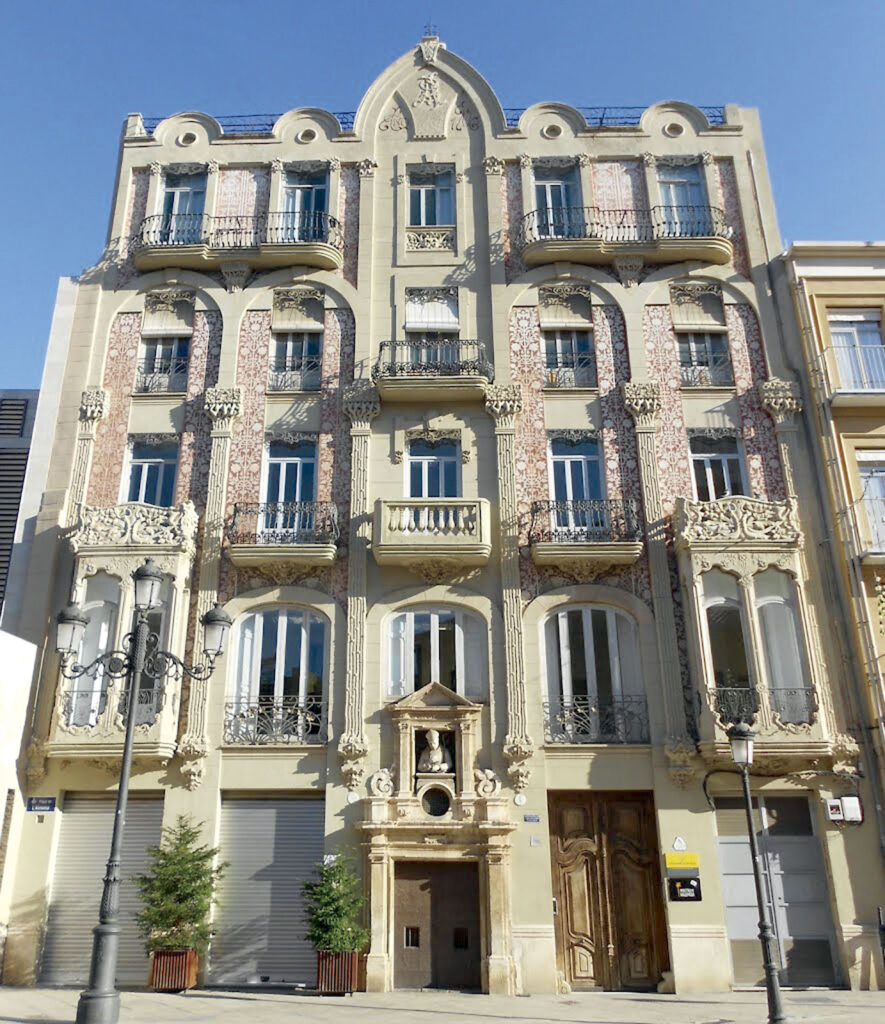
Moving back to the city centre, right in front of the Lonja, a building for silk exchange, there is the masterpiece of the Valencian modernism: the Central Market (1928). It is a building where iron and glass gather together in harmony, with great tile-decorated domes and weathervanes crowning the building. Their coloured stained-glass windows bring natural light into the market, the great trade reference in the city. It is considered the greatest pantry in Europe. A buoyant market where one can find hundreds of market stalls and daily enjoy the best Mediterranean gastronomy. Over 3,5 million people visit it annually.
The tour around the modernist Valencia continues in the square known as Plaza de la Almoina, with the building Punt de Gantxo. Its façade is decorated with pillars imitating trunks and stone balconies, each one different from the other. Going on towards Plaza de la Reina, we find the building Casa Ordeig (1907), a magnificent house with neo-gothic influences. It is inspired in the building of the Lonja (1483), a landmark building of Valencian gothic architectural style.
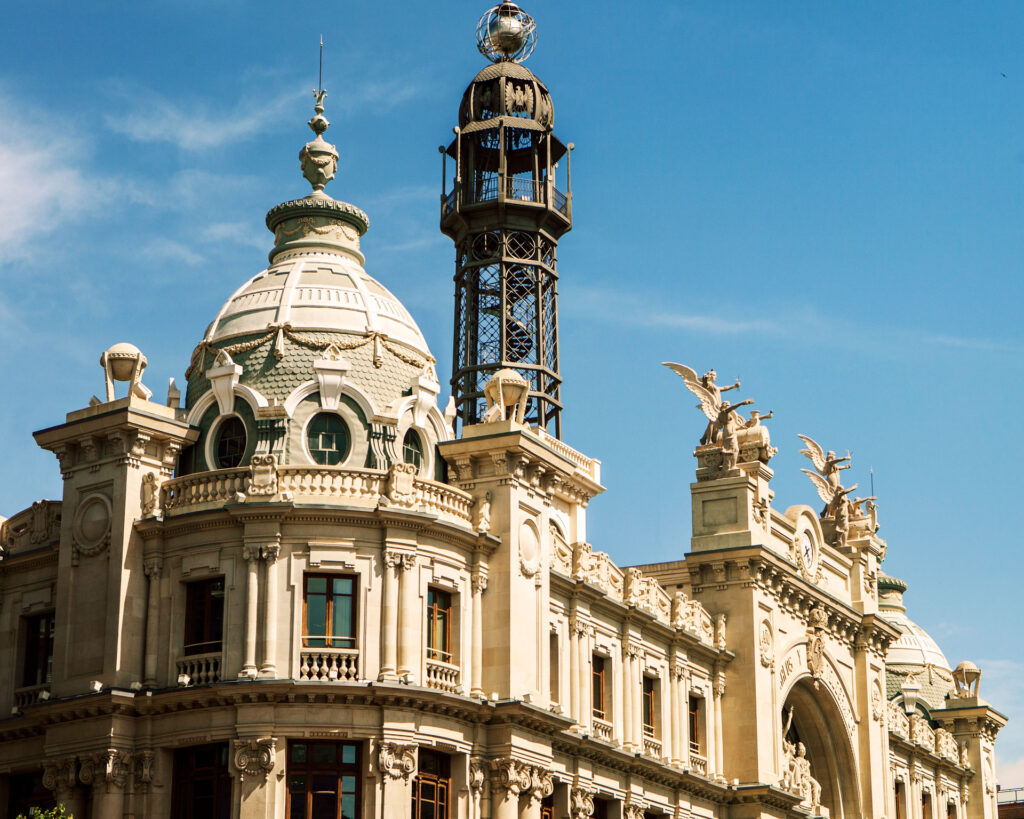
Back again towards the district of the Eixample and really close to the Mercado de Colón, right in Sorní street, there is the Casa de los Dragones (1901). It is named after its ornamentation, mainly flowers and dragons. The architectural style of this building is known as “fantastic medievalism”. Moving towards the Gran Via Marqués del Turia, it is worth visiting the buildings Casa Ortega and Casa Chapa. These are two of the best examples of the Valencian modernism applied to housing construction. Right on the opposite side of the Turia Gardens, by the Alameda area, the impressive building Palacio de la Exposición can be visited. It was the headquarters for the Regional Exhibition in 1909 and, incredible as it may seem, it was built in only 70 days that same year. Not far from here, Valencia hosts other modernist jewels such as the buildings Asilo de la Lactancia and Fábrica de Tabacos. Nowadays, the latter is a municipal building.

